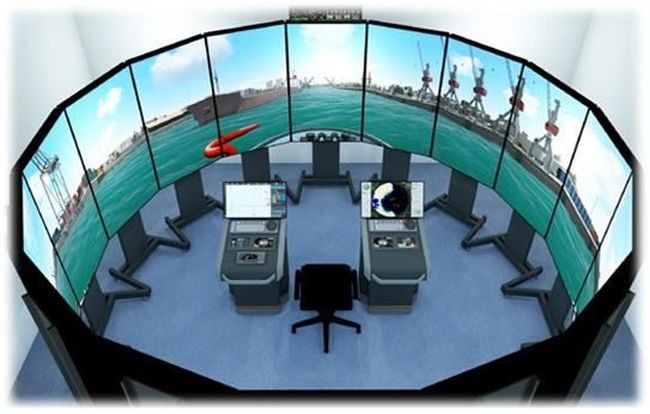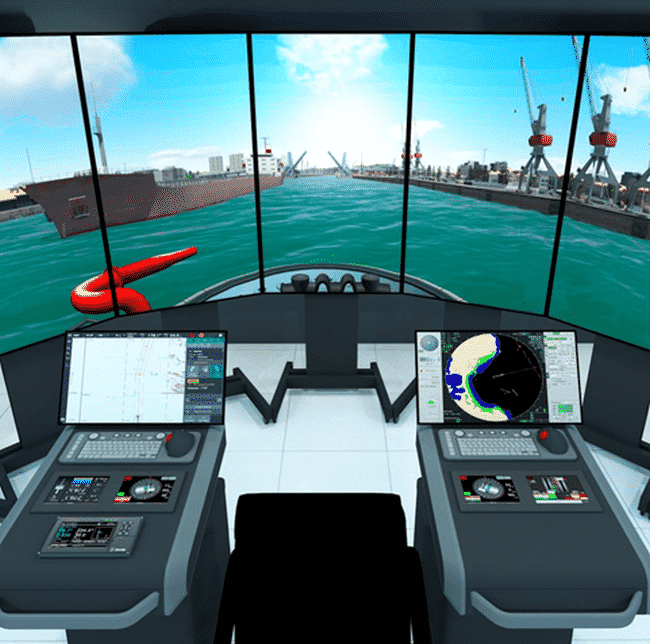
[ad_1]

Wärtsilä Voyage will deliver the next generation navigational simulator for Singapore’s Centre of Excellence in Maritime Safety (CEMS) to prepare seafarers for shore-based remote management of vessels and autonomous ship operations. CEMS is a collaboration between the Singapore Maritime Institute (SMI) and Singapore Polytechnic, supported by the Maritime and Port Authority of Singapore. The next generation simulation platform will be based on the Wärtsilä NTPRO (Navi-Trainer Professional 5000) Navigational Simulator in a shore-based operational configuration.
CEMS will execute research and development in multiple skills with the support of augmented, mixed, and virtual reality. The project will focus on new modelling and simulation tools that enhance marine and navigational safety, the development of a complex port environment, as well as validation of new operational concepts, particularly with smart and autonomous ships.
“This is a strategically important partnership as CEMS and Wärtsilä Voyage share common objectives of introducing next-generation smart marine technologies safely and with a human-centric approach, both on the vessel and on the shore side. We look forward to working with CEMS and link-minded global partners to advance this important topic,” said Chris Chung, Director, Ecosystem Development, Wärtsilä Voyage.

Image Credits: wartsila.com
“As the maritime industry gets more digitally connected, it is opportunity to embark on a journey to identify and define new skillsets that could be radically different from today. CEMS shares a common vision with Wärtsilä Voyage to embrace technologies and prepare our workforce to be future ready through research and innovation,” said Daniel Zhang, Centre Director, CEMS at Singapore Polytechnic.
Wärtsilä Voyage’s collaboration with CEMS covers three core disciplines of seascape, landscape and mathematical modelling of all relevant vessel types for training shore-based navigation officers, as well as the development of training material for remote operations. These include areas such as assistive technologies for use onboard ships and during training, simulators to study human behaviour and competency to enhance the safety of navigation, infusing wearable technologies, and co-develop scenario-based “Standards Validation” simulation for autonomous vessel research. The research concepts and projects will be conducted over the next two years.
Recognizing the long-term need of creating an environment to promote data-driven innovation and developments in the maritime sectors, the Singapore Maritime Institute has also signed a Memorandum of Understanding agreement with Wärtsilä Voyage. Under this, the two parties will continue to cooperate and identify industry challenges that can be resolved through data-driven tools, applications, and technologies, as well as provide researchers with relevant and anonymised data to support their work under SMI’s Maritime AI R&D Programme.

Image Credits: wartsila.com
“The project is of high significance as it paves the way for future collaborations and projects not only in the Asia-Pacific region but with the global industry where Wärtsilä Voyage’s simulation platforms can act as safe testbeds for validating all kinds of smart marine and autonomy technologies,” said Pierre Guillemin, Vice President, Technology at Wärtsilä Voyage.
“AI and simulation tools not only provide us with the unique platform to safely test and validate a myriad of situations and environments before going for actual sea trails, but they also give mariners ample opportunity to get used to the new technology without any risk,” added Guillemin. “We, therefore, see this collaboration as the perfect opportunity and example of how different stakeholders within the industry can come together to leverage big data and combine their expertise to develop and implement smarter technologies faster, and catapult shipping’s transition towards sustainability.”
Press Release
Centre Of Excellence In Maritime Safety In Singapore To Use Wartsila’s Next Gen Navigation Simulator appeared first on Marine Insight – The Maritime Industry Guide
[ad_2]
This article has been posted as is from Source